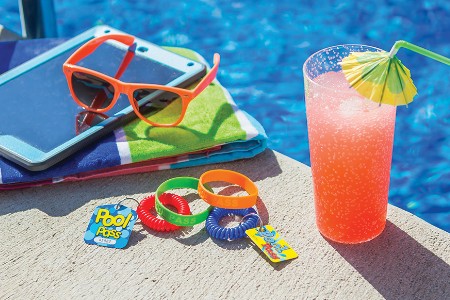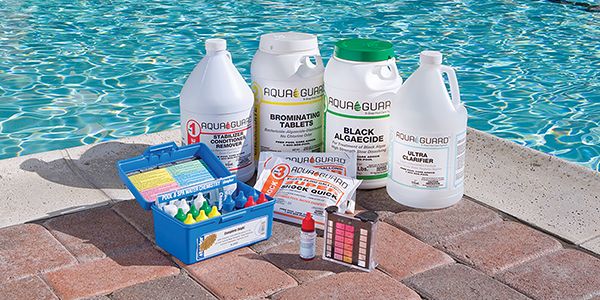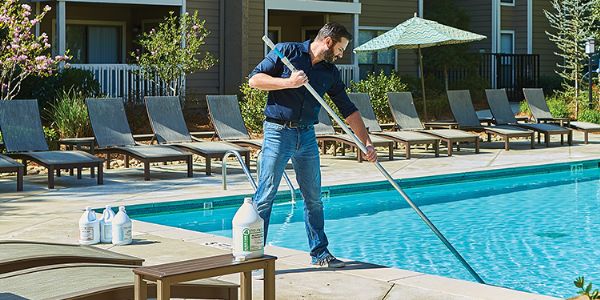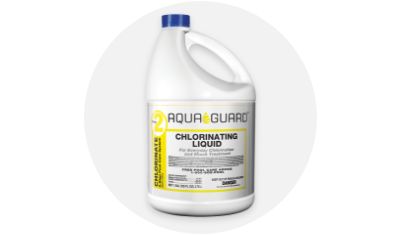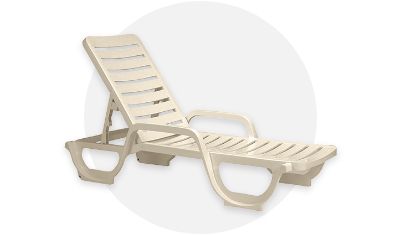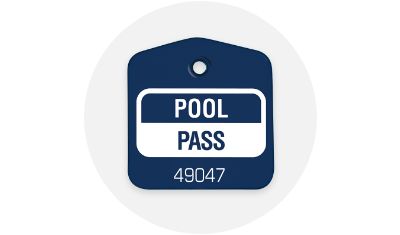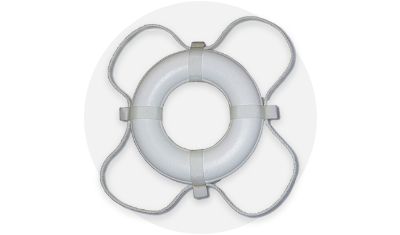
Pool Care Resources
We are your ultimate resource for easy commercial pool care. Improve your pool maintenance skills and eliminate expensive third-party outsourcing costs. Whether you're ready to become a NSPF Certified Pool Operator or just want to learn basic pool care skills, our professional training classes can help.
MY POOL TESTING™ TOOL
Testing your water can be intimidating, and outsourcing costs can leave you underwater. Our testing tool lets you dive in with confidence.
EASY POOL MAINTENANCE
Keep your pools clean year-round with professional pool products and supplies from AquaGuard®.
Common Pool Issues & Solutions
Cloudy Water
When pool water is cloudy, your property suffers, making a bad impression on swimmers and sunbathers. Use clarifiers to remove particles and clarify water.
Find the reason for cloudiness:
1. Check the filtration system, and replace filters as needed.
2. Test pH and total alkalinity, and adjust if necessary with alkalinity boosters . Adjust pH with pH up soda ash or pH down dry acid.
3. If total alkalinity and pH are correct, shock pool water with shock quick pouch or non-chlorine shock treatment and run the pump on a longer cycle.

Eye Or Skin Irritation
Stinging eyes or skin irritation typically happen when the pool water's pH is out of proper range.
Treat eye or skin irritating pool conditions:
1. Test pH and adjust pH up with soda ash or pH down with dry acid.
2. Test pH and total alkalinity, and adjust if necessary with alkalinity boosters. Adjust pH with pH up soda ash or pH down dry acid.
3. If pH is correct, shock pool water with shock quick pouch or non-chlorine shock treatment and run the pump on a longer cycle.

Chlorine Odor
A clean pool will smell clean. A strong chlorine smell in pool water indicates chloramines are present. This means there is not enough acid free chlorine available to fight germs and oxidize organic materials, such as sweat and body oils.
Eliminate chlorine odor:
1. Test pH and adjust using pH up soda ash or pH down dry acid.
2. Shock pool water with shock quick pouch or non-chlorine shock treatment and run the pump on a longer cycle.

Blue/Green Water
A very common type of algae that causes the water to look blue/green will bloom when conditions are right and sanitizers are low.
If you notice blue/green water conditions, take these steps:
1. Test pH and adjust using pH up soda ash or pH down dry acid.
2. Use clarifier and vacuum any fallout to avoid staining.

Blue/Green Algae
Green algae commonly grows along the walls or bottom of a swimming pool, or you may notice greenish material floating in the pool water. Avoid this unsightly condition by ensuring you have adequate levels of free chlorine .
To help control green algae:
1. Brush algae off surfaces with a pool brush.
2. Test pH and adjust using with pH up soda ash or pH down dry acid.
3. Shock pool water with shock quick pouch or non-chlorine shock treatment using three times the normal shock dosage.
4. Run the pump on a longer cycle.
5. Treat with green algaecide.

Brown Or Mustard Algae
Mustard algae or brown algae can be difficult for pool caretakers to remove and will require a special algaecide. Often resembling pollen, dirt, or sand, mustard algae is a yellow/brown color and appears in the shaded side of the pool along the walls and floor.
To help control brown or mustard algae:
1. Brush algae off surfaces with a pool brush.
2. Test pH and adjust using with pH up soda ash or pH down dry acid.
3. Shock pool water with shock quick pouch or non-chlorine shock treatment using three times the normal shock dosage.
4. Run the pump on a longer cycle.
6. Treat with mustard algaecide.

Black Algae
Black algae appears as black spots on the plaster of affected pools and can be difficult to remove. Note: These tips and the recommended black algaecide are only for unpainted concrete pools.
To help control black algae:
1. Brush pool surfaces with wire algae brush.
2. Test pH and adjust using with pH up soda ash or pH down dry acid.
3. Shock pool water with shock quick pouch or non-chlorine shock treatment using three times the normal shock dosage.
4. Run the pump on a longer cycle.
5. Treat with black algaecide and use algaecide 60% concentrate.

Saltwater Pool Maintenance Made Easy
If you have a saltwater pool or are thinking about converting to one, we have the pool care products and expert advice you need to keep your salt pool operating safely and efficiently all season.
Did You Know?
• A saltwater pool is not a "chlorine-free" pool and requires regular maintenance to keep the water clean, sanitized, and sparkling clear
• Salt pools typically have high pH levels and require regular pH reducers
• Salt pools can experience fluctuations in sanitizer PPM (parts per million) and need regular shocking
• Frequent use of algaecides and water clarifiers is strongly suggested
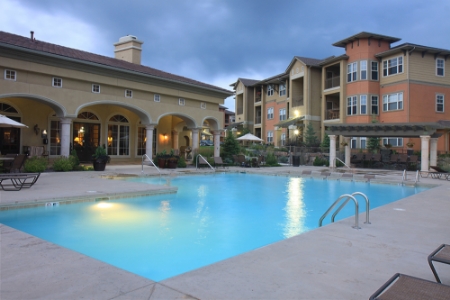
10 Tips For A More Inviting Pool
Swimming pools are one of the most desired amenities. A well-maintained and inviting pool or spa offers a chance to relax, exercise, and play. With proper care and attention, your pool or spa can become your property's best asset.
1. Regular Skimming
Spending a few minutes a day with a pool skimmer or cleaning basket will greatly improve the health of your pool. Use the pool skimmer to collect any debris like leaves, twigs, bugs, gum wrappers, etc. that have blown into your pool. This will help keep debris out of filters and keep water clear. Also, if you keep long-handled skimmers available and easy to reach, some swimmers may even clean the water themselves.
2. Brush & Vacuum
Every week, pool water should be vacuumed and surfaces should be cleaned with soft brushes. Vacuuming helps keep water clean and clear, which means less chlorine and chemicals. Algae and mildew can grow on pool walls and tiles. Cleaning with a pool brush or pumice stone once a week helps keep fungus from forming. Be sure to use cleaning brushes that are specifically for pools to avoid scratches and damage.
3. Maintain pH Levels
A sparkling clear pool shows your commitment to quality and cleanliness. Have a testing kit on hand to check pool chlorine levels daily. Have a ready supply of pool chemicals to use as needed. Track pool maintenance with a pool operations log to better predict your seasonal needs for pool chemicals.
4. Clean Pool Filters
The pool filter works hard to remove particles and debris from your pool. Regularly check the filters, especially during peak use. Clean and replace filters as needed. A clogged filter won't effectively clean the pool water.
5. Keep Pools Full
During swimming season, water levels in your pools can decrease due to splashing, skimming, and evaporation. Replace lost water to keep your pool full. If water levels get too low, the pump and filters could be affected.
6. Secure Your Pool
Make everyone feel safe with controlled access to your pool and recreation areas. Be sure fences and gates meet safety requirements and regulations for your region. Use a pool pass program with custom pool passes so only authorized users are enjoying your amenities.
7. Put Safety First
Stay in compliance with local and state laws. Use stock and semi-custom pool & spa signs to display pool rules, hours, and warnings. Help prevent accidents before they happen by providing safety equipment, such as slip-resistant mats, life rings, and pool handrail covers. This helps keep swimmers safe and liability low. Having the right pool safety equipment should be part of your year-round pool maintenance program.
8. Update Outdoor Pool Furniture
Turn your pool area into a relaxing oasis. Replace old or outdated tables, chairs, umbrellas, and chaise lounges with new and comfortable pool furniture that is durable and maintenance-free.
9. Host Or Allow Parties
Scheduling swim parties is common, but you can also use the pool area to host an elegant cocktail party, a wacky luau, a weekend movie night, or other fun events. Having fun-filled activities around the pool will engage your guests and residents, making your property more desirable.
10. Winterize Your Pool
In regions where temperatures drop below freezing in winter, it's important to winterize your pool once swimming season has ended. Water left in pipes, pumps, and filters can freeze and cause damage. Take care to drain water from pipes, filters, and heaters. Use a shop vac or air compressor to blow water out of the pool's plumbing to prepare for winter.
Before closing up for the season, clean the pool thoroughly with brushes and pool vacuums and drain the pool so the water level is below the plumbing line and skimmer. Balance the water and cover the pool to keep out debris.
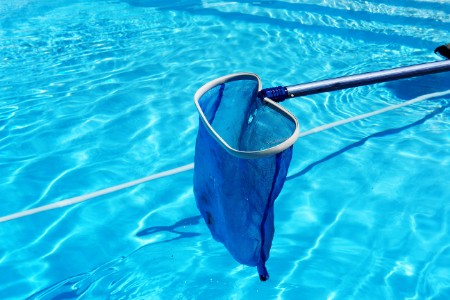
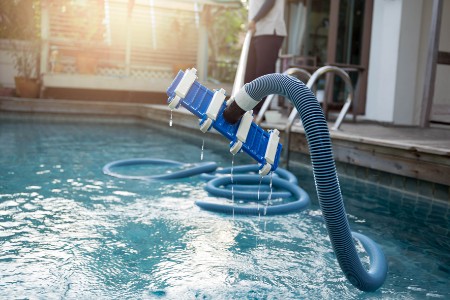
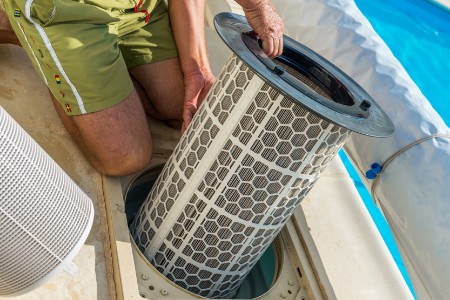
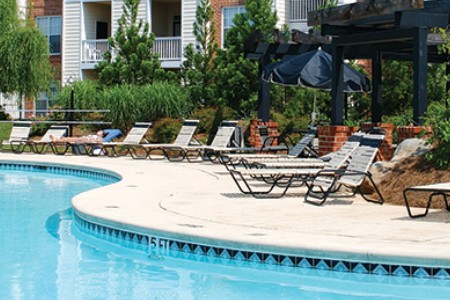
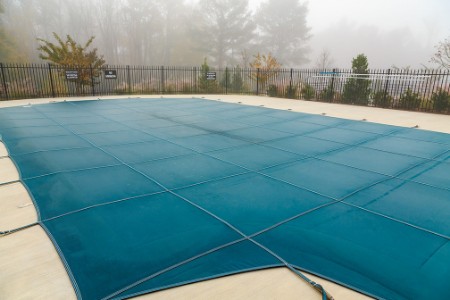
Pool Safety & Equipment
Pools are a property's most valuable asset, attracting families and kids, sunbathers, and swimmers. Unfortunately, drowning and injuries around pools are all too common. Take precautions to help prevent injuries and avoid liability. Equip your pool and pool area with the proper pool safety equipment.
Be sure your pool has these safety items:
1. Pool Fencing: Install regulation fencing with self-closing and self-latching gates around pools to help prevent unauthorized use. Some states and counties have specific guidelines regarding pool fencing and barriers. Check the building codes for your region to see what type of fence is required.
2. Pool Ladders: Swimmers need a safe and easy way to exit the pool. Make sure ladders and stairs are secure and that you have a good tread on the steps to prevent slipping.
3. Anti-Slip Paint: Coating pool decks and stairs with an anti-skid paint can help reduce accidental slips, falls, and poolside injuries.
4. Emergency Pool Phones: Have a working poolside phone that is easy to find and ready to use in case 911 must be called.
5. Pool Floats & Ropes: Swimming pool rope floats can be used to separate the shallow water from the deep end, giving swimmers a boundary line. Ropes and floats can also section off lanes for lap swimmers.
6. Pool Lifts: Pool lifts make entry and exit easier for disabled swimmers, and are required for ADA compliance for Title II and Title III pool facilities.
7. Pool & Spa Anti-Entrapment Equipment: Swimmers are at risk for drain entrapment if a body part, clothing, or hair gets held against a drain by a forceful suction. Prevent this horrible situation by installing anti-entrapment drain covers and using a vacuum release system.
8. Pool & Spa Handrail Covers: Metal pool handrails baking in the summer sun can be hot to the touch. Using handrail covers can help protect swimmers from burns, and the anti-slip texture will provide added safety.
9. Pool & Spa Passes: Using customized passes will limit access to your pools and spas, and ensure only authorized guests or residents are using the amenities.
10. Pool & Spa Signs: Post signs around the pool and spa, alerting everyone to rules, policies, and emergency procedures. Signs can be stock, semi-custom, or fully custom to meet your needs.
11. Water Rescue Hooks & Flotation Devices: Rescue hooks and lifesaving flotation devices should be easy to reach and readily available in case of an emergency.
12. First Aid Kits: Keep a well-stocked first aid kit in the pool area that is easy to find. Be sure it includes scissors to cut hair or clothing.
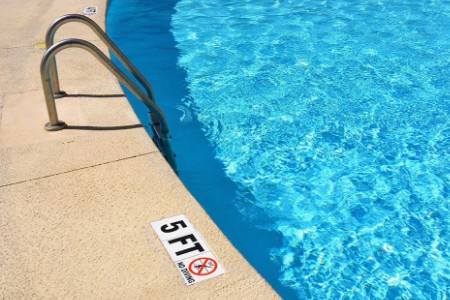
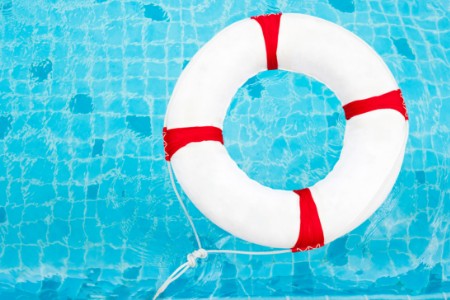

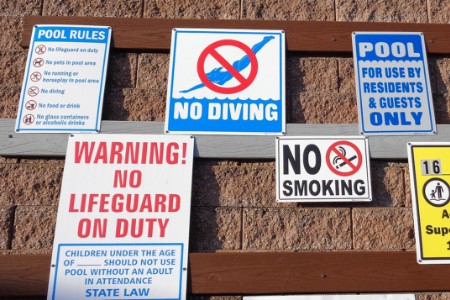
Pool Lift Legislation
ADA pool lift regulations went into effect January 31, 2013. Any swimming pool, spa, or wading pool open to the public must meet the U.S. Department of Justice's ADA Title II and III requirements by having an accessible means of entry or exit for people with disabilities. To learn more on the pool lift regulations and requirements visit the ADA's website.
How does this affect your property?
Any pool open to the public must comply with this regulation. Title II affects school districts, municipalities, cities, and counties. Title III affects hotels, motels, places of public accommodation, health clubs, country clubs, and recreation centers.
Failure to comply could result in costly fines or legal action.
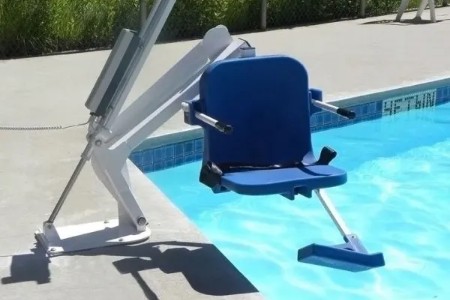
Pool Pass Program
Importance of Pool Passes
Your pool, spa, gym, and recreational areas are not for everyone's use. Control access to pools and spas to keep everyone safe and your amenities clean. Unauthorized guests can be disrespectful to your property and to people who have rights to the pool and/or spa.
Use pool and recreation passes to provide security and safety for your facility while limiting the use of these amenities to only authorized residents and guests.
An effective pool pass program helps you keep record of pool usage and maintain pool safety.
Selecting the right pool pass for your facility is easy. Consider various styles, from temporary pool passes to custom passes printed with your property logo.
4 Tips to Creating Your Own Pool Passes
1. Customize with Your Logo: Customize your pool passes with your words and logo that are unique to your property and easy for staff to recognize.
2. Use Numbers: A numbering system helps you identify users and keep track of all the pool passes you've issued. Numbers can be random or sequential.
3. Add an Expiration Date: Pool passes shouldn't last forever. Issue new passes annually to improve security and prevent abuse.
4. Color Code Passes: Issue different color passes to residents and/or guests to make identification easy, or color code passes for different amenities. For example, use red for the gym and tennis courts, and blue for your pool and spa.

